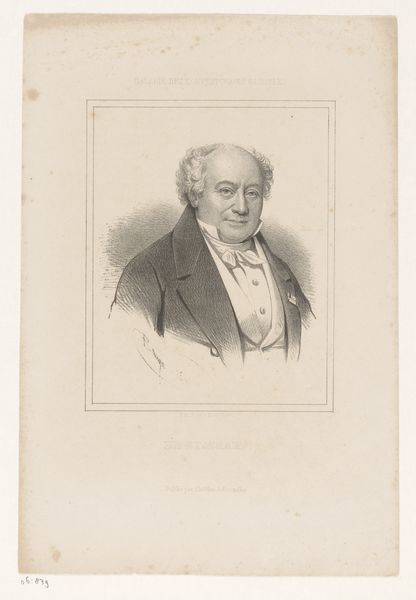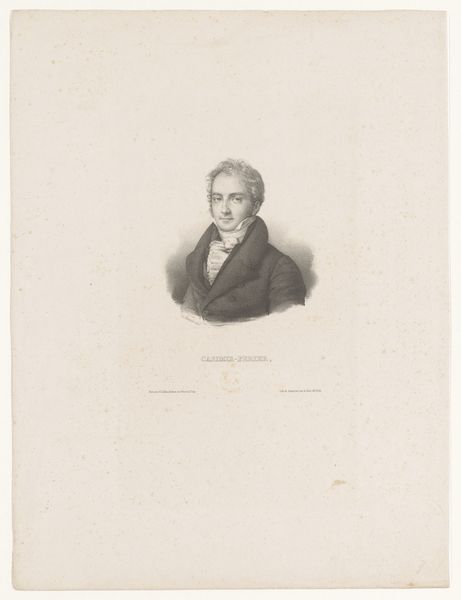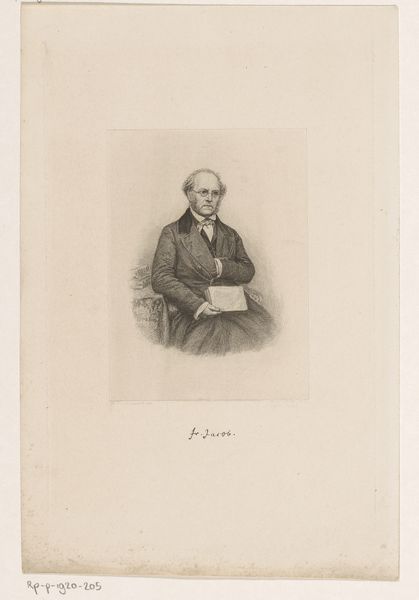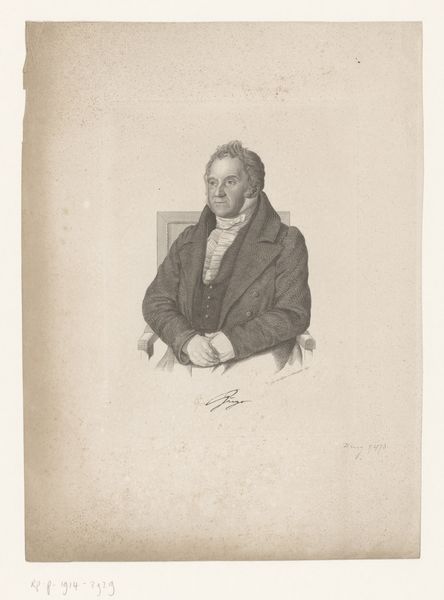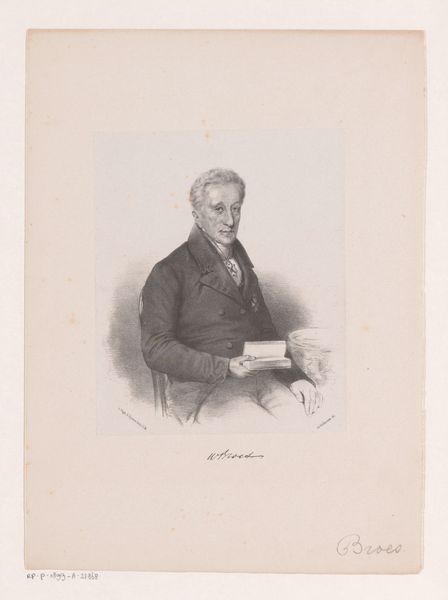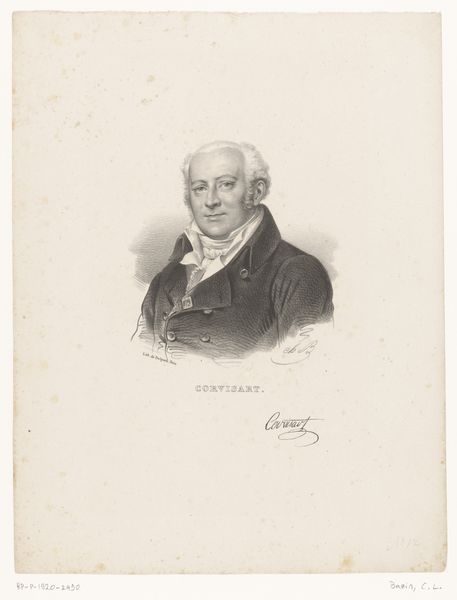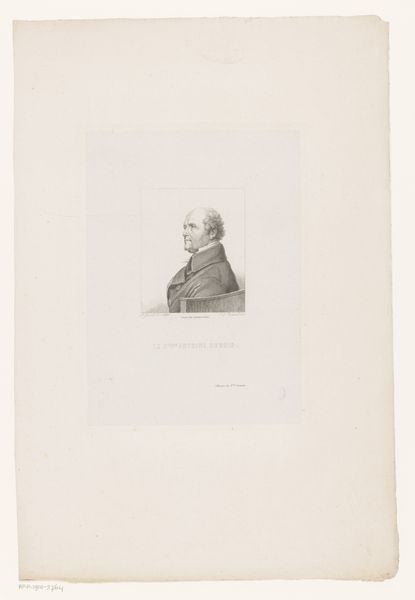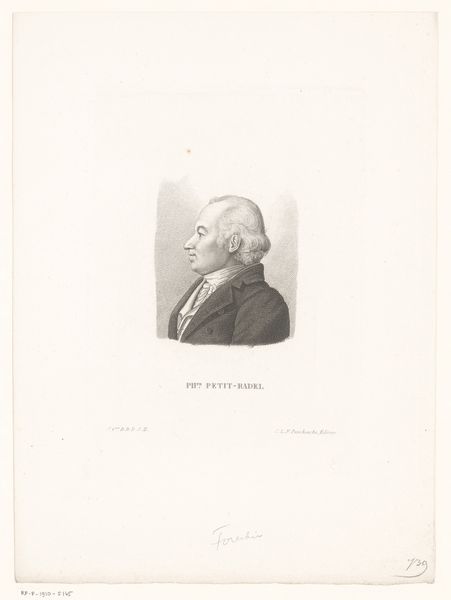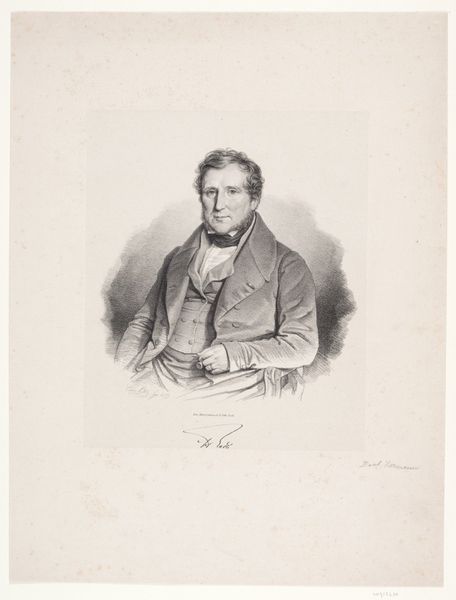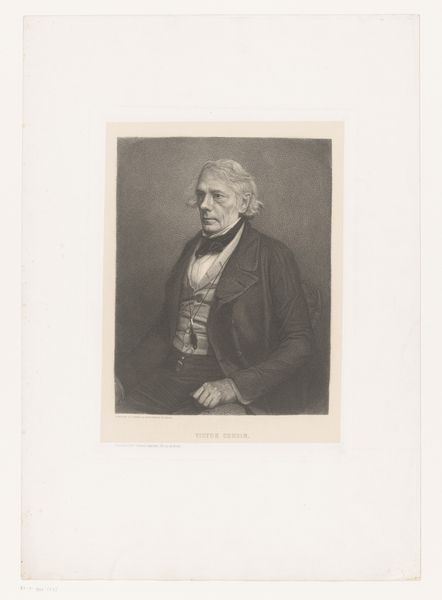
drawing, etching, paper
#
portrait
#
pencil drawn
#
drawing
#
neoclacissism
#
etching
#
charcoal drawing
#
paper
#
realism
Dimensions: height 240 mm, width 177 mm
Copyright: Rijks Museum: Open Domain
Editor: This is Ludwig Emil Grimm's 1826 portrait of Arnold Hermann Ludwig Heeren, rendered in etching. I'm immediately drawn to its detailed, almost photographic quality achieved solely with etching. How do you interpret this work through a historical lens? Curator: This portrait sits within a fascinating moment of shifting power dynamics in art and society. Think about the rise of the middle class. Commissioning portraits became less exclusive to the aristocracy. What kind of man do you imagine Arnold Heeren to be, judging by this portrayal and the historical context? Editor: Someone of intellect, definitely. The book on the table signals learning, and the way he’s seated, he seems like a man interrupted in thought, yet very in control of his presence. How would the social function of portraits evolve in that era? Curator: Precisely! Portraits became a tool for projecting status and respectability within this burgeoning middle class. It is Neoclassical in that is shows a kind of upstanding civic virtue. But you should notice, the artist is no longer interested in depicting the ideal figure. He's interested in how individuals fashion and signal identity in an era of new possibility. The public exhibitions provided places where one would negotiate ideas of status, class and identity. Consider who might have viewed this portrait, and where. It’s not simply about capturing a likeness; it’s about participation in cultural currents. Editor: So the act of displaying it, making it public, completes its purpose. It makes me consider the role of galleries then versus now. I didn't think about portraits outside their traditional use. Curator: Exactly! Museums and galleries became active participants in shaping cultural values, displaying not just art, but also societal ideals. The portrait of Heeren is part of this larger system, performing a crucial social function of constructing and reinforcing identities within the public sphere. This system makes it a portrait and gives its political message. Editor: That’s insightful. Thinking of art as participating in a kind of active dialogue is a really helpful perspective shift for me. Curator: Glad to help. It's important to understand not just what art *is*, but what it *does*.
Comments
No comments
Be the first to comment and join the conversation on the ultimate creative platform.

